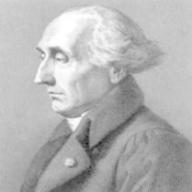✔ 最佳答案
This is in fact the difference between photon absorption and photon scattering. In photoelectric effect (光電效應), which occurs at low photon energy, the energy possessed by the incident photon equals to the ionization energy of the outermost orbital electrons of the target atom. Hence, the photon can transfer all its energy to the orbital electron and cause it to become a free electron.
Compton scattering (康普頓效應) occurs at high photon energies. The energy possessed by the incident photon is is far more than the ionization energy of orbital electron of the target atom. Thus, when the orbital electron becomes free, there is still energy left in the incident photon. The incident photon, now with lower energy, will then be scattered by the target atom.
2013-10-02 00:39:44 補充:
Answer to your suppl question:
The excess energy goes to the kinetic energy of the ejected electrons.
2013-10-02 10:19:05 補充:
Your further question:
This depends on the probability of occurence of the two processes. The probability for photon interaction falls off inversely as the cube of the photon energy, but for Compton effect, it falls off inversely as the square of the photon energy...
2013-10-02 10:21:58 補充:
(cont'd)...Hence, at high energies, the probability for photoelectric effect to occur becomes smaller than that for Compton effect.
You could look at the following diagram for the occurence of both effects in lead.
http://pibeta.phys.virginia.edu/docs/publications/tom_diss/html/photoatt.gif
2013-10-02 10:25:24 補充:
(cont'd)... You can see that below photon energy of about 0.3 MeV, photoelectric effect dominates. But above that energy level, the probability of occurence of Compton effect is higher than that for photoelectric effect.
2013-10-02 10:27:29 補充:
sorry...a typo in my 1st para., 2nd sentence. It should read "...The probability for photon interaction in photoelectric effect falls off inversely as the cube of the photon energy,..."

